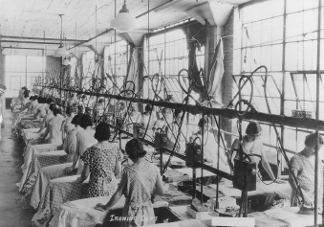HAYS, J. BYERS (11 Feb. 1891-26 Aug. 1968), architect active in Cleveland from 1920-63, was born in Sewickley, Pa., son of Alden Farrell and Augusta (Ulrich) Hays. He graduated in architecture from Carnegie Institute of Technology in 1914. Hays came to Cleveland in 1920 to join the firm of WALKER AND WEEKS, designing the FEDERAL RESERVE BANK OF CLEVELAND (1923), Indiana War Memorial, Indianapolis (1927), exterior of CLEVELAND MUNICIPAL STADIUM (1926), and St. Paul Episcopal Church, Cleveland Hts. (1927-51). In 1930, Hays established a partnership with Russell Simpson which lasted until 1950. In 1935, Hays & Simpson planned an experimental modular house for GE that was erected at NELA PARK as a prototype for a small house specifically designed for family living, prompted by the Depression. In 1936, they designed the Hall of Progress for the GREAT LAKES EXPOSITION, where Hays served on the architectural committee. During WORLD WAR II, Hays was briefly associated with civil engineer WILBUR J. WATSON† in designing war housing projects. After the war, he founded the firm of Conrad, Hays, Simpson & Ruth, which continued as Hays & Ruth from the mid-1950s until Hays's retirement in 1963. Hays drew the master plan for the Cleveland Zoo in 1948 and designed the bird and pachyderm buildings. Hays & Ruth planned the 1958 addition to the CLEVELAND MUSEUM OF ART, and also the Lakewood High School auditorium (1960) and Riverview public-housing development (1963). Hays married Charlotte M. Hunter and had 2 children, Elizabeth (Schoenfeld) and Alden F. Hays died at his summer home in Webster, North Carolina and was buried in LAKE VIEW CEMETERY.
Last Modified: 17 Jul 1997 02:53:15 PM- Related Article(s)









